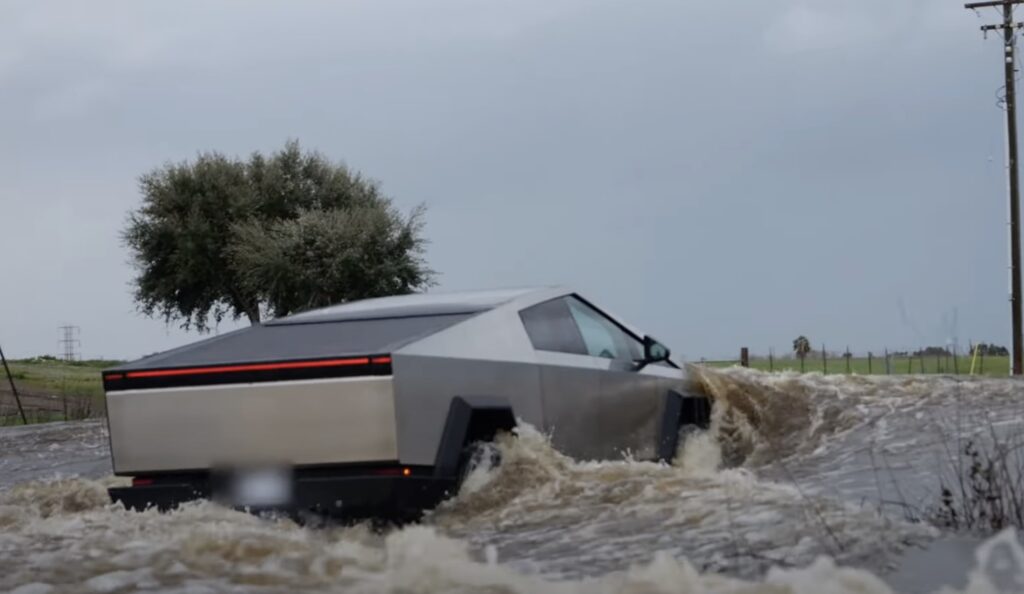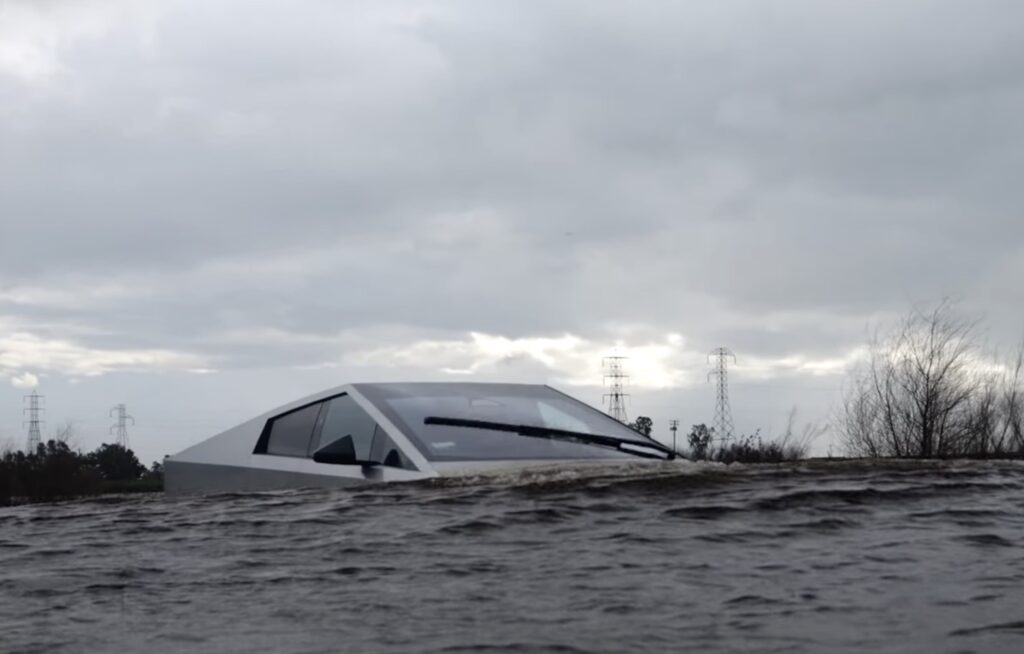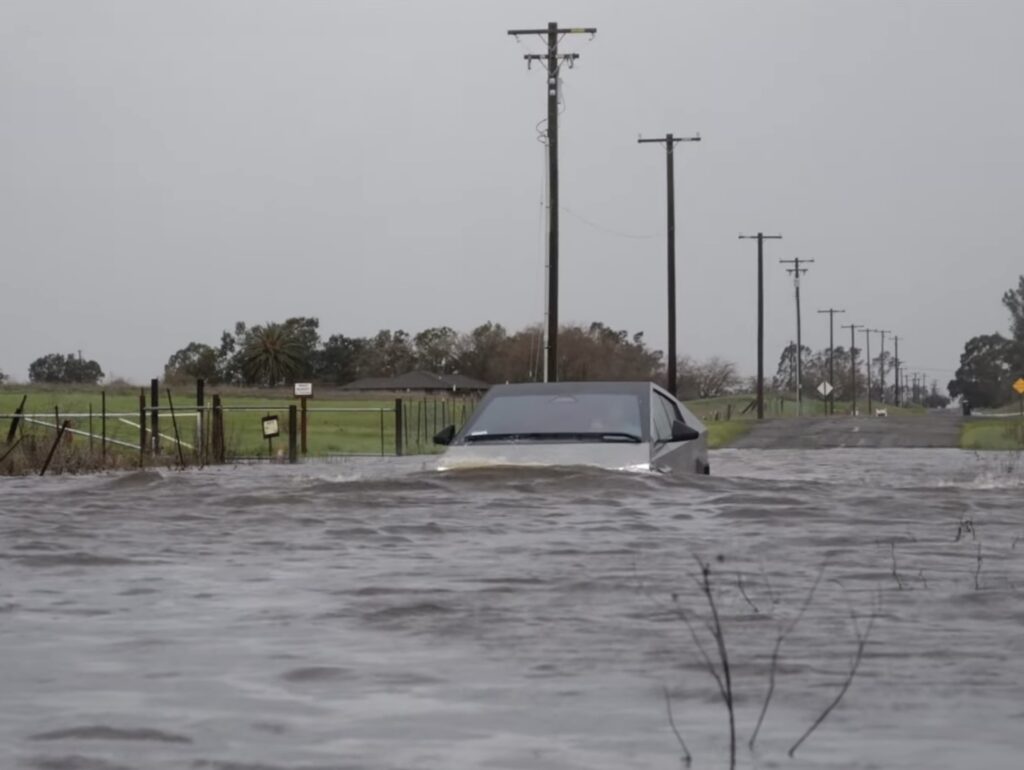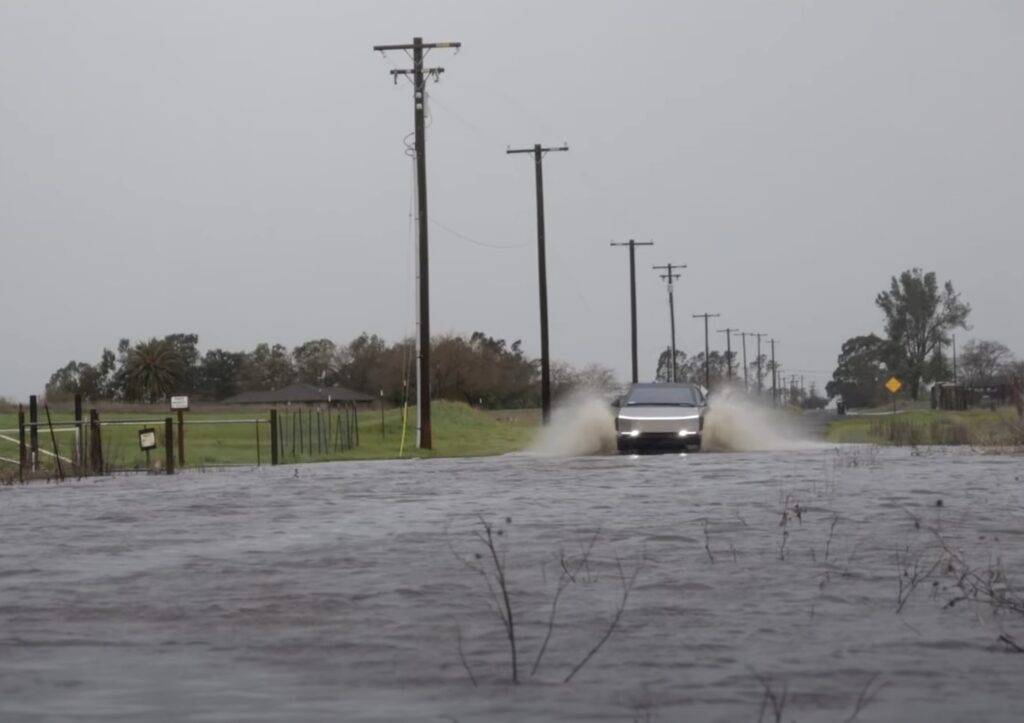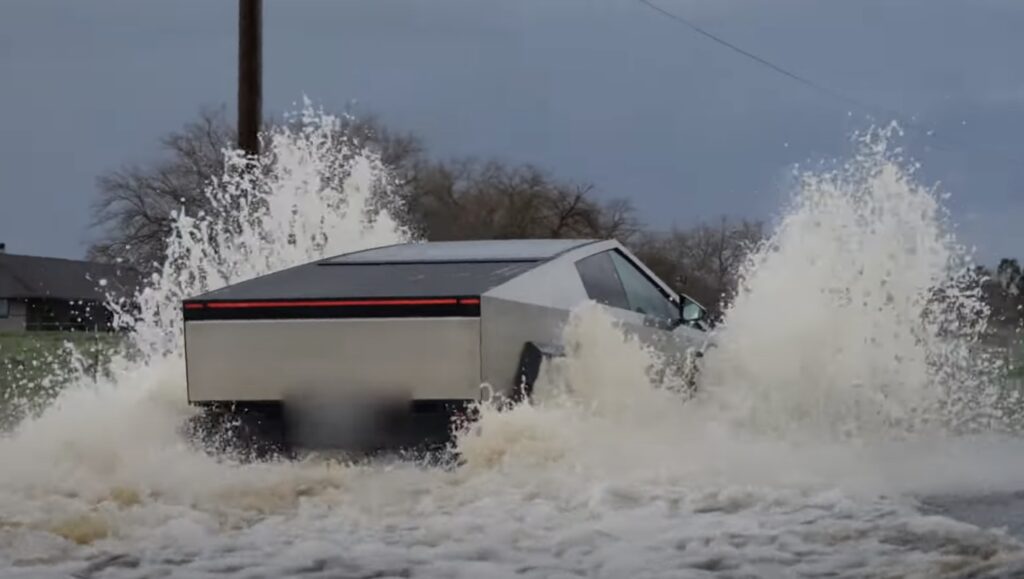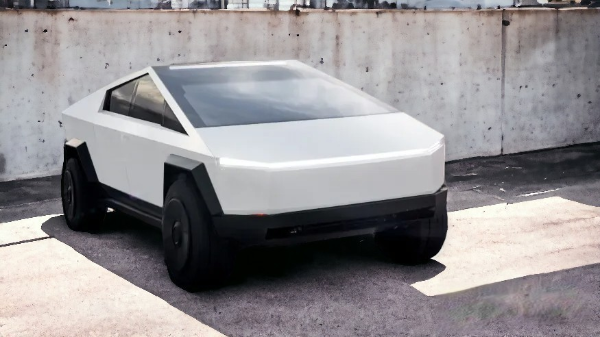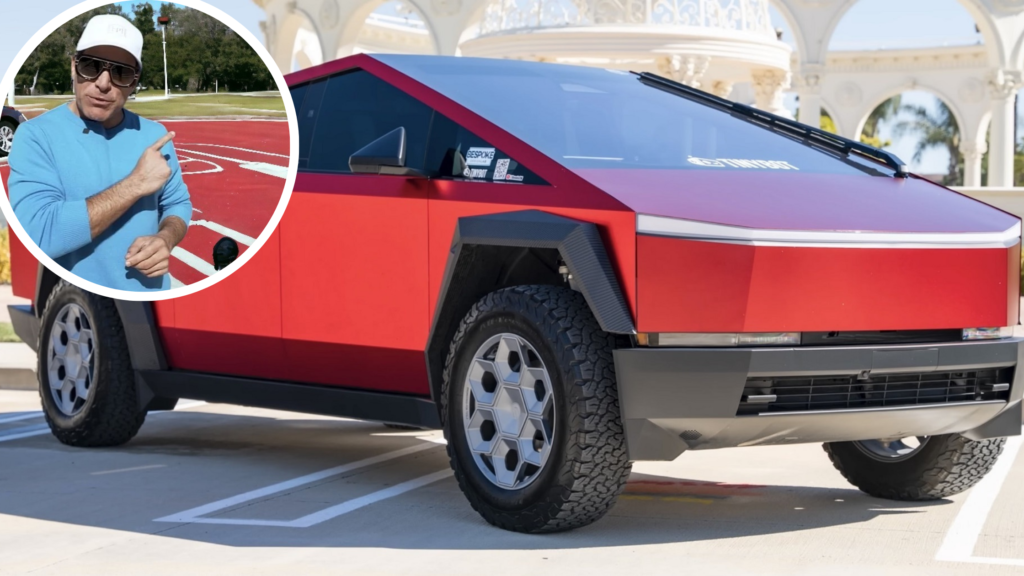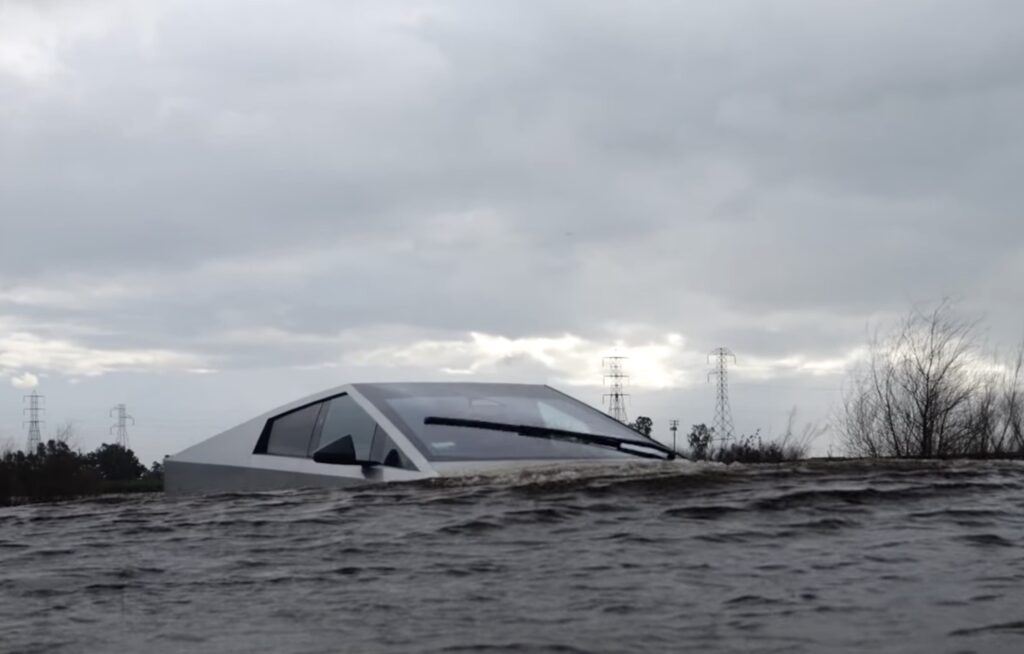
Within the world of car innovation, Tesla stands out as a major player, always pushing the boundaries of what we think is possible. Among its groundbreaking creations, the Tesla Cybertruck is a symbol of bold design and futuristic engineering. But amidst all the excitement about what it can do, there’s an important question: Can the Cybertruck really float?
Tesla has said that the Cybertruck can float, tempting fans with the idea of cruising on water like a boat. But when we look closely, the reality is more complicated. While the Cybertruck does have a “Wade Mode” to help it go through shallow water, there’s no evidence to support the idea that it can float like a regular boat.
Using the Cybertruck’s Wade Mode is a careful process that takes up to 10 minutes to get ready. During this time, the vehicle raises its suspension and prepares the battery, supposedly getting itself ready for shallow waters. But this mode is mainly for going through water that’s not very deep, with Tesla saying it can handle water up to 31 inches high, which isn’t enough for floating.
Real-world tests show how the Cybertruck performs in water. As it goes in, there are warnings and signs that things aren’t going smoothly. While it can move through shallow water, it’s not a smooth experience. Water gets in, the windshield gets covered, and parts move around, showing that it has limits when it comes to water.
When compared to other vehicles that can float, like BYD’s YangWang U8 SUV, the Cybertruck falls short. The YangWang U8 has a mode specifically for floating and can stay buoyant for 30 minutes, much longer than the Cybertruck’s capabilities.
Elon Musk’s tweet in 2022, saying the Cybertruck could work as a boat for at least 100 meters, adds to the discussion. But without proof, people are still unsure if it’s really possible.
While the Cybertruck has impressive ground clearance compared to trucks like the Ford F-150 Lightning and the Chevrolet Silverado EV, it’s important to remember that ground clearance doesn’t mean it can float.
Testing the Cybertruck in water reveals problems, like parts moving around and not working properly after being in water. And there’s also the risk of rust, with some Cybertruck owners reporting rust after heavy rain. This shows the importance of protecting the Cybertruck from water damage to keep it innovative and reliable.
Conclusion
while the Tesla Cybertruck is an impressive feat of automotive innovation, its ability to float needs more investigation. Practical tests show that it has limitations in water. While people hope for updates that could improve its abilities, it’s important to understand its current limits. The Cybertruck might not float yet, but there’s still potential for it to evolve in the future. Let’s discuss the Cybertruck’s abilities clearly, recognizing both its strengths and its limitations.
Photo Gallery
